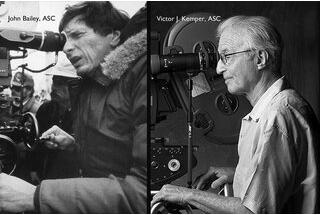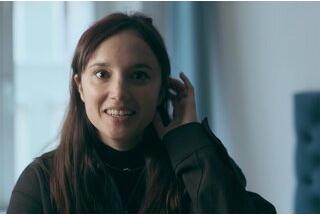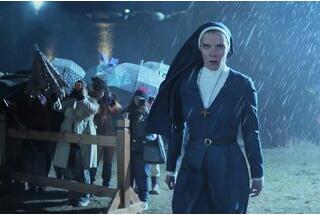Fredrik Wenzel, FSF, discusses the making of “Triangle of Sadness”, by Ruben Östlund
Carl and Yaya are in a boat...After Fashion Week, Carl and Yaya, a couple of models and influencers, are invited abord a yacht for a luxury cruise. While the crew takes great care of the vacationers, the captain refuses to leave his cabin as the famous gala dinner approaches. Events take an unexpected turn, and the balance of power is overturned when a storm arises and endangers the passengers’ comfort...
The film is very clearly in three parts, did you have the feeling of shooting three films in one?
Fredrik Wenzel: Not really... We didn’t say to ourselves that we were going to make three different films, with a separate approach to each chapter. On the other hand, given the time we spent making this film, I can tell you that I have the feeling of having made almost five films in one!
Seriously speaking, Ruben usually likes to take his time making his films, but with the arrival of Covid, the shooting schedule simply became insane. We started in February 2020, just at the start of the epidemic. We had to stop production after a few weeks of work, then start again in the fall once things had calmed down a bit. In terms of planning, I clearly remember the first day of filming: the night car sequence between Yaya and Carl, as they left the restaurant. This scene was a real challenge for me. We wanted to shoot this dialogue in a long take, with left-right pans on one then on the other, a little bit in the spirit of what we had done at a certain point in The Square.
But this time, it was really more complicated. We were in a car driving for real with rain rigged to the car and on the ground, with the two actors working together for the first time and we are filming in 360°. A nightmare. Looking back, I think it’s sometimes very good to start shooting with a really complicated scene. It puts the team on the same wavelength as the film and you derive a lot of energy and pride from it. This is also one of the scenes of which I am proudest from a technical standpoint.
How did you manage to film it?
FW: A regular Bolt-system was to large to fit in the car so I called on a young tech genius in Sweden, Hugo Nilsson, who modified an industrial robotic arm and worked out a control unit made from a garage door opener. Thanks to this machine, I was able to personally program the different reference positions in advance to train the camera on Harris and Charbi (who play the characters of Carl and Yaya in the film). The result is a kind of dialogue ping-pong game sort of comically enhancing their different positions.
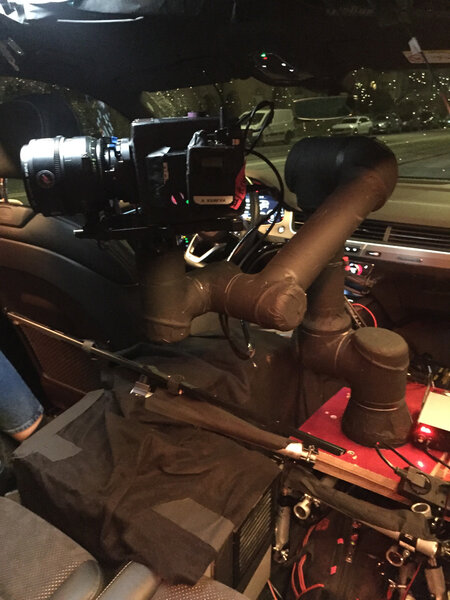
Now let’s talk about the cruise...
FW: For this second part, we first shot in a studio in Trollhättan, Sweden, where we built the sets for the dining room and part of the yacht’s corridors. As you can imagine, the platforms the sets were built on were mounted on hydraulic jacks, which allowed us to create all the storm effects with people who have to lean over to remain standing, or prop elements that roll about on the floor. In order to handle the background lighting through the portholes, I was interested in shooting against a LED wall, but the producers didn’t give me the green light. So, we did these sequences the “old way” with blue screens. Chroma is always difficult, especially because of the low light night sequence and the spill from the blue. But the special effects team did a really good job of integrating the plates.
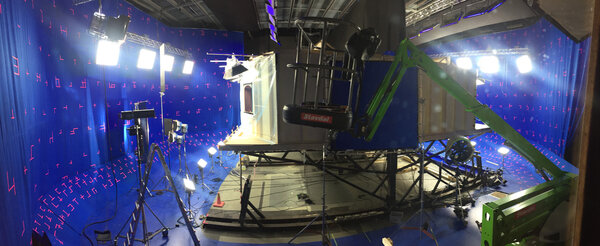
Did you rewatch Titanic ?
FW: We didn’t watch the film, but it’s true that we looked at some stills from Titanic, especially for the dining room. The thing you need to know is that we then shot all the exteriors on the deck and in some cabins on Aristotle Onassis’ actual yacht. This is a rather retro boat if you compare it to the avalanche of glass and plastic that is currently found on luxury yachts, such as those currently moored in the bay of Cannes. Perhaps that is why the film’s visuals might evoke Titanic. But, if you want to identify an influence that resolutely guided us on this film, you have to look at the world of comics, and especially Hergé. This can be seen in our choice of a boat he might have drawn, or the wild island, which we chose especially for its resemblance to a possible Tintin album.
And Woody Harrelson is Captain Haddock?
FW: Yes, that’s him! Well, he doesn’t have the blue sweater or the rather bushy beard, but he’s definitely his American Marxist cousin. And he loves to tipple as much as him.
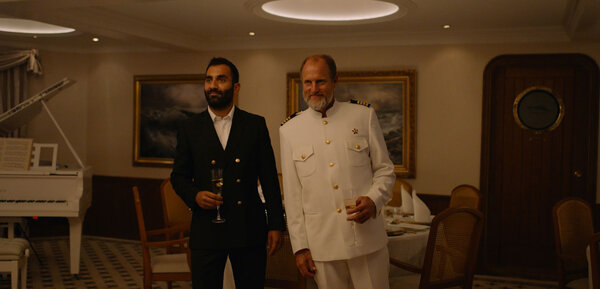
How did you shoot the storm scene?
FW: The approach was to keep most of the lighting practical, from prop sources, and to control everything via our control panel. Once the dining room had been built, the different lighting atmospheres that we used as the storm raged on could be activated within seconds. Tobias, my gaffer, played an important role in coming up with the visuals on these scenes, with the help of Best Boy Giedrius Bukaitis. My biggest fear in studio was that he might get Covid, because no one else would have known how to operate his console! As for the camera, we first filmed all the shots where the camera follows the movements of the set, with pitching effects added in post-production, by cutting slightly into the image. This was to give Ruben the maximum amount freedom and options during editing, and to allow us to trigger exactly, at the desired moment, any given movement, and to dose its amplitude and tempo.
How did you choose the island?
FW: The location scouting for the island first led us to Thailand, as the screenplay evoked a sort of tropical island... and then the idea came from one of the producers to go searching in the Cyclades, which was quite logical given that we were going to shoot on the yacht stationed in the region. It was as we were visiting the island of Euboea, near Athens, that we discovered the beach you see in the photo (the beach of Chiliadou).
We were immediately enthusiastic about how mineral it was. There are rocks on the beach, but at the same time, the entire beach is surrounded by thick vegetation. This gives a fresh, unexpected feel, and provides more mountainous terrain than the Thai islands, which are often quite flat. It’s not a very touristic island, and it turns out that this is a beach where backpackers come for camping for half of the year. We therefore came to an agreement with them that allowed us to use the beach by removing all their tents but putting them back up once we had finished shooting. It’s a really quiet, splendid place, with barely three restaurants and nature...
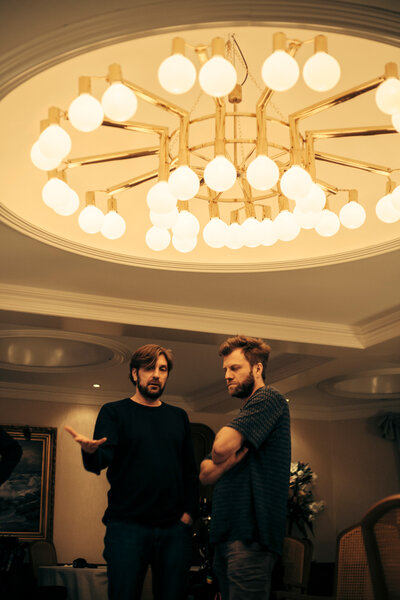
There is a very nice long take at the opening of the third part...
FW: This take was even longer when we shot it. There was at least one more VFX heavy minute in the opening where you could see the horizon and the shipwreck in the distance. Another reason I admire Ruben is that, during editing, he has this clear-headedness that allows him to cut hots like this. When we began, we hadn’t specifically planned to make such a complicated shot, but as the rehearsals went on, we thought that it could work, by letting people interact in the background and bringing out their lines rather than moving into coverage. Its the first real panoramic shot in the movie and I think it allows you as an audience to breathe, after that long part on the boat, and especially the storm. The situation was inspired by the British telereality show “The Island” where a group of contestants try to survive on a deserted island. And it’s interesting to observe how in that show, the minute people stop collaborating or get into a conflict, their situation very quickly becomes critical.
And the lifeboat?
FW: This boat quickly becomes the most desired place of the entire location. We chose a bog-standard model. We liked the idea that it should be brightly colored, the red interior becoming almost like a womb. Everything was shot on location, in the actual boat, which ended up becoming our cover set by default, since it was our only interior set on the island.
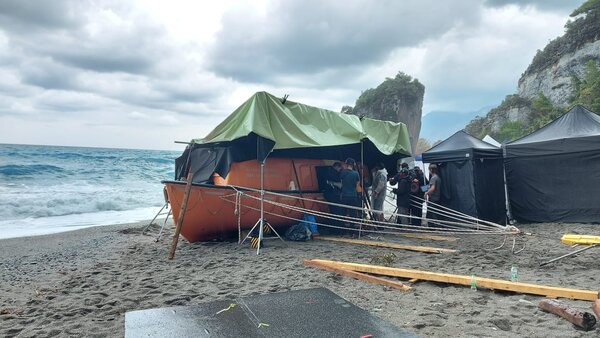
Nights on the beach?
FW: Ruben is absolutely allergic to cinematic moonlight. And yet, on the night scenes, you have to have a little bit of light coming from somewhere... You may have noticed a shot of Yaya shot in infrared mode in the film, in complete darkness... It was beautiful, to see the actors in total darkness acting with their completely dilated pupils... One day, I would like to be able to make a film in total darkness ! To return to our discussion of the more traditional night scenes, almost any light source had to have a reasonable explanation for existing. For example, there are the small blue emergency lights that continue to flash on the inflatable life raft after it has washed up on the beach. They allowed me to sometimes give a subtle ambience of blue light around the campfire to make the vegetation in the background a little more visible. We often shot at the last hours of dusk, rehearsing all day and then generally getting two takes in the last light of day. I am thinking, for example, of the night scene where Abigail comes back from fishing, or when Carl and Yaya have an argument when the latter is about to spend his first night in the boat. And then also the scene where they get scared and fire the distress flares. Here, we considered using an illuminating drone to cheat the rocket effect, but test we did looked too controlled So, everything was done with real rockets, at ISO 3200 with the RED Gemini. It was so much more beautiful to see the glow of the rocket actually fall into the sea and gradually die out !
Does HDR speak to you?
FW: No one has spoken to me about an HDR version of the film, but it’s true that in this kind of situation one would like to be able to use it to explore more nuances in low light, for example. What also seems to me to be very beneficial for us filmmakers with HDR is that I have the impression that, thanks to this technology on platforms in particular, we have a better guarantee that the viewer will see the film properly. The Dolby protocol, for example, takes over the settings of a television set, and avoids all the horrible movement and sharpness filters which are often activated by default on home television sets. I know this, because when I see a movie I made on my parents’ television, I don’t even recognize the visuals!
What equipment did you shoot with?
FW: We shot with an Alexa Mini LF. I chose to equip the camera with a Zeiss Supreme series which, aside from looking very sleek, are also extremely lightweight lenses. When you compare them to other lenses that are more or less equivalent in terms of brightness and rendering, it’s amazing how much lighter they are. Lots of shots were shot with a Ronin, even still shots. I adopted this tool on this film and it allowed me to go very quickly from one configuration to another. And I’m really bad with the crank head, and this allows me to cheat!
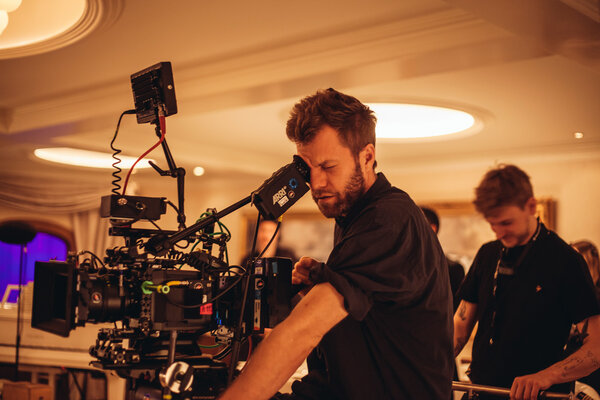
What are you most proud of on this film?
FW: I cited the car scene as a technical point of pride, but above all I must take my hat off to all the actors, and particularly to Sunnyi Melles who played the wife of the Russian fertilizer salesman. I had never thought that in my career I would one day shoot a sixty-year-old woman in a nightie throwing up and bouncing around in her vomit, swaying against the walls of her bathroom stall ! She’s an actress whose total commitment and great generosity on set literally amazed me. I admit that we laughed a lot on set, although Ruben kept saying to all the actors : “Stop laughing, this is not a comedy ! This is a social experiment!"
(Interview by François Reumont, for the AFC, translated from French by A. Baron-Raiffe)
 En
En
 Fr
Fr
